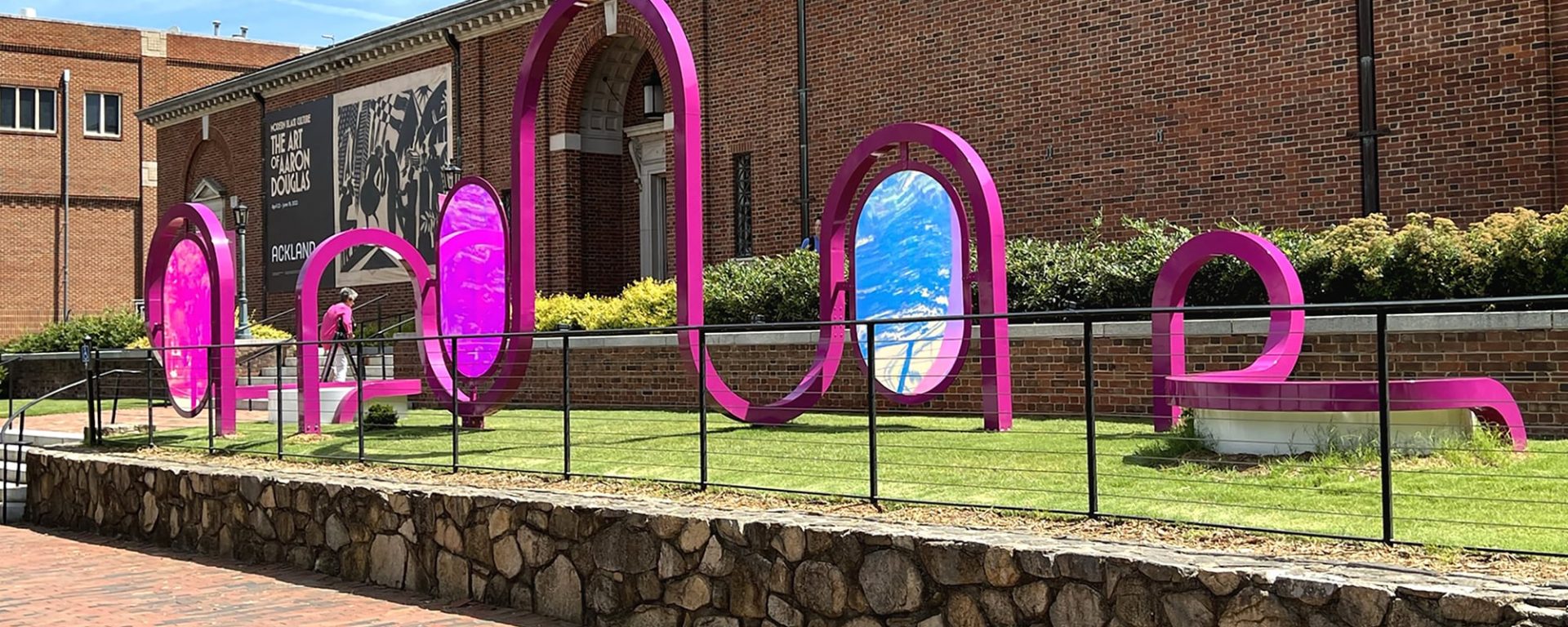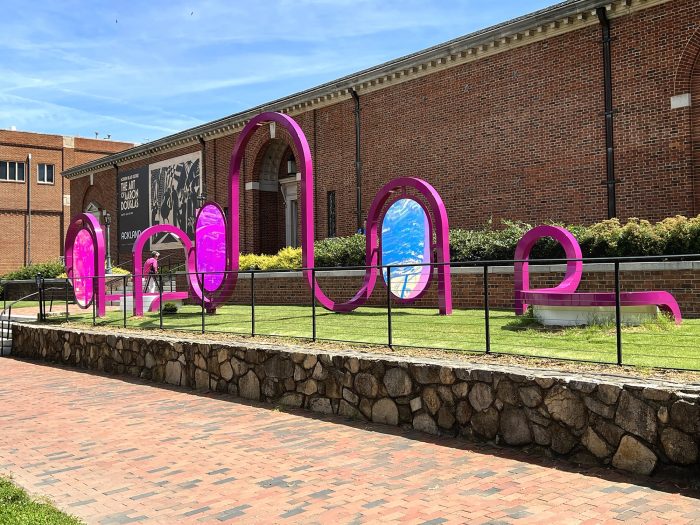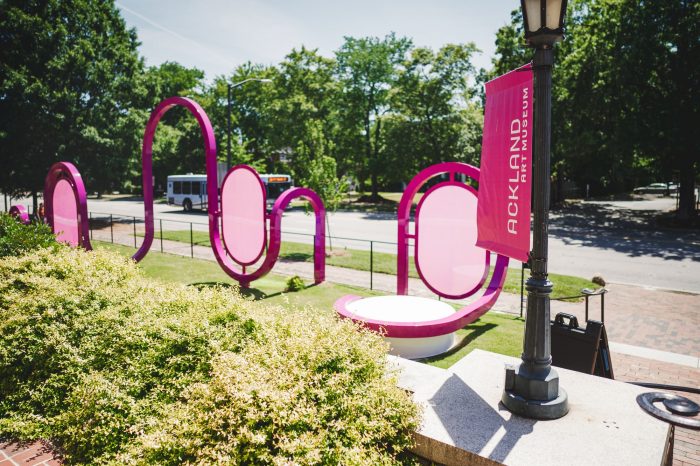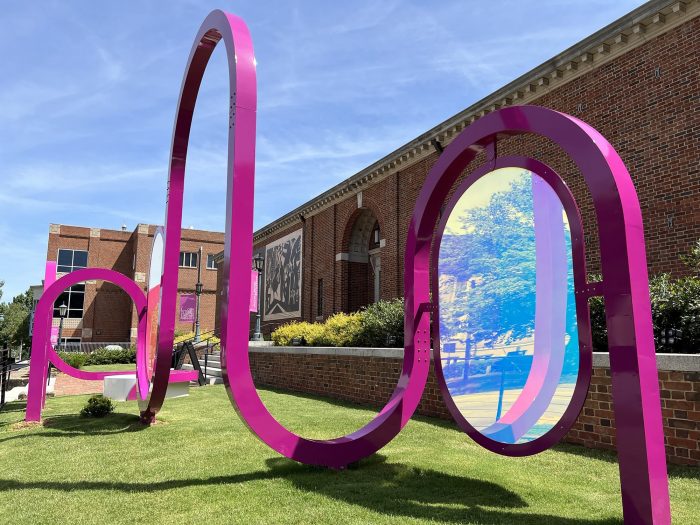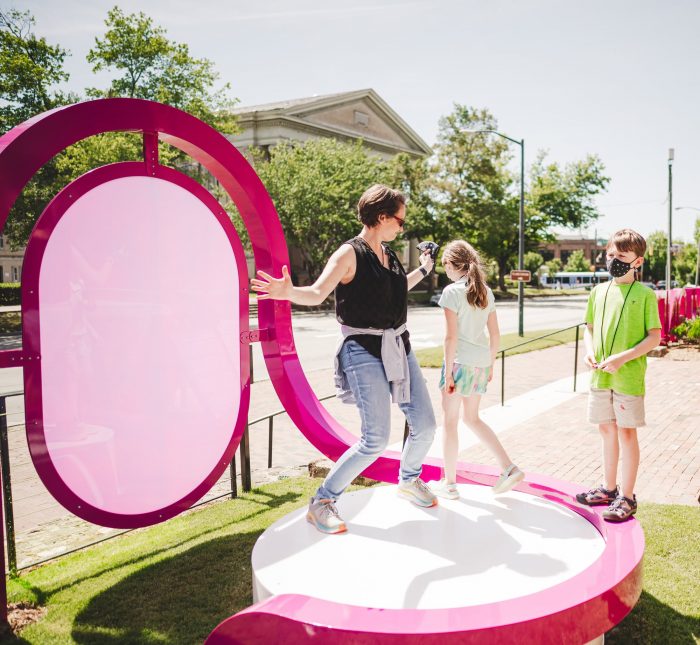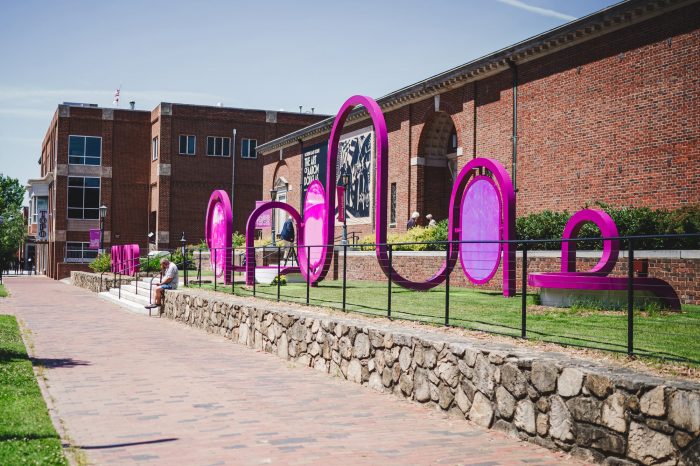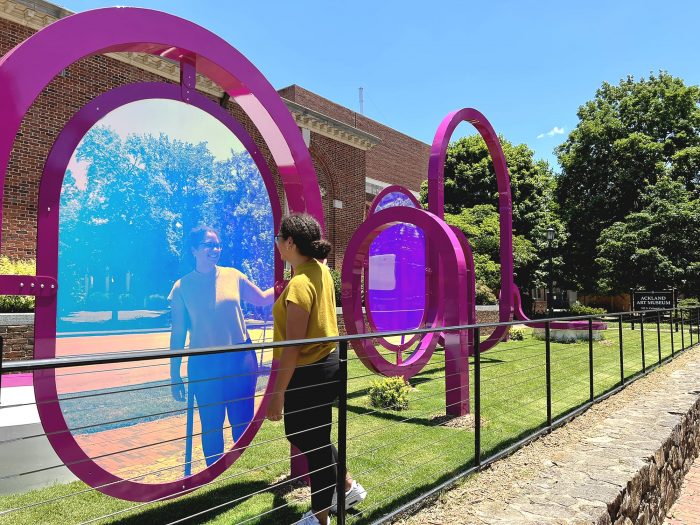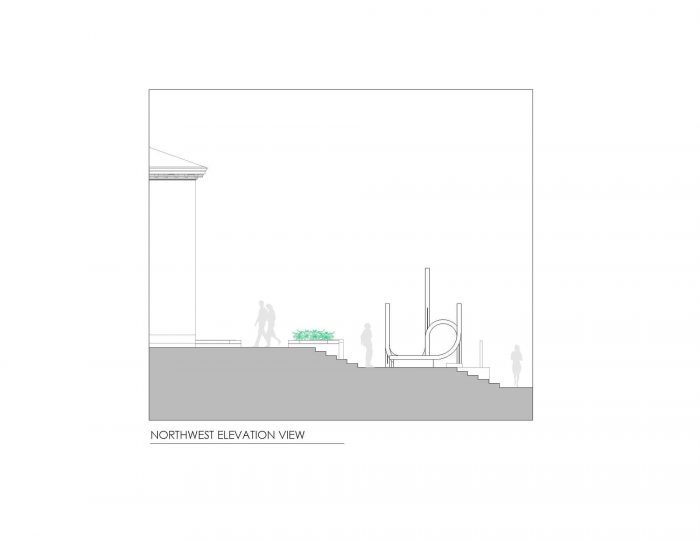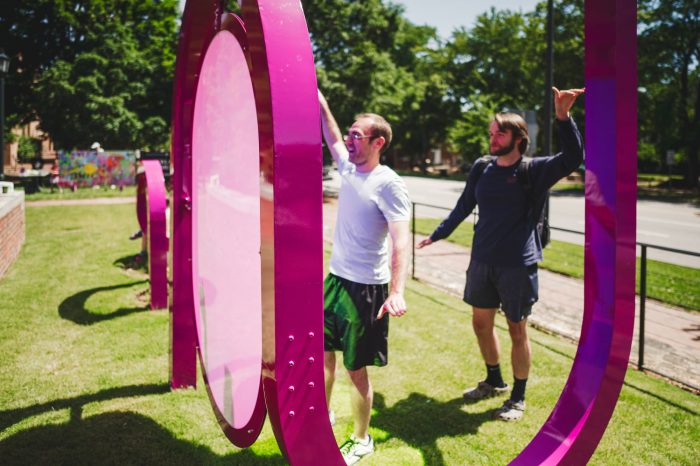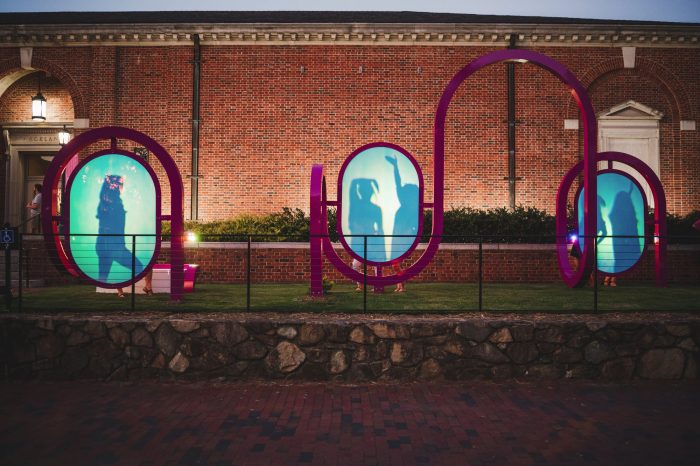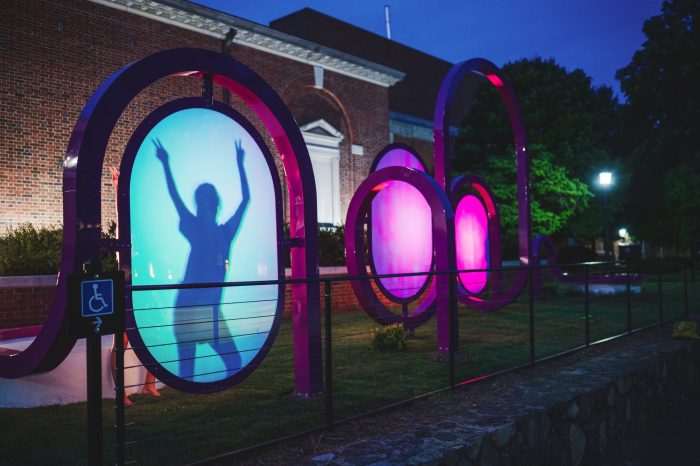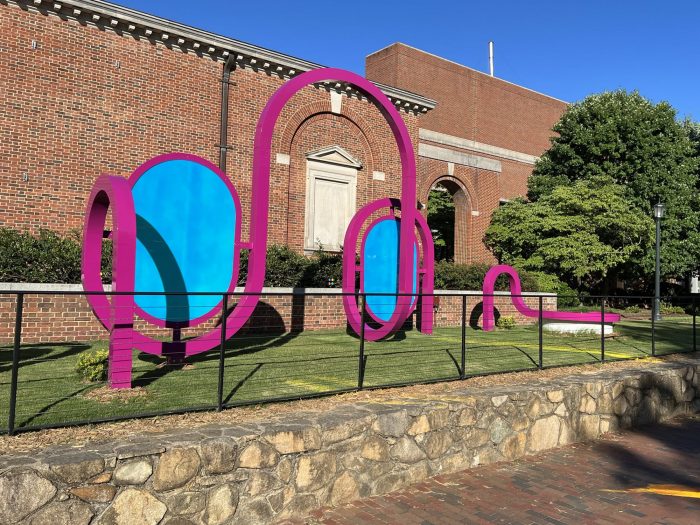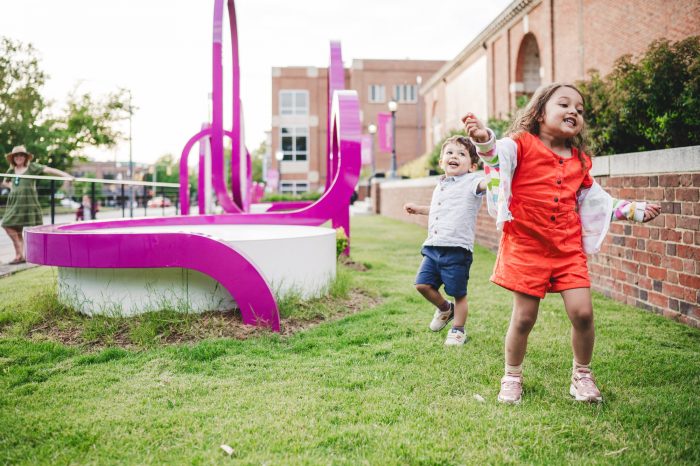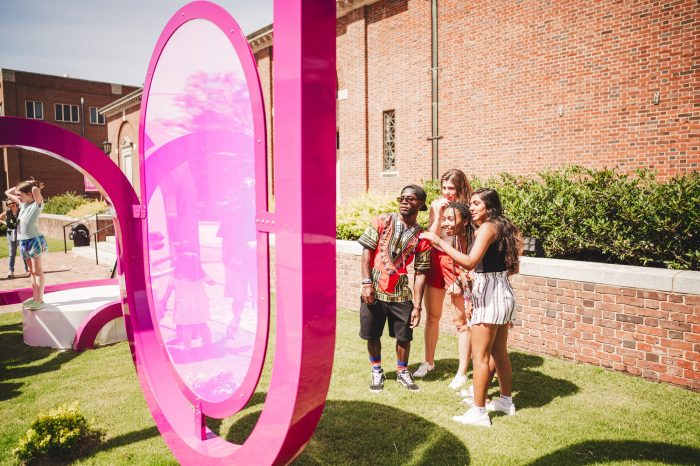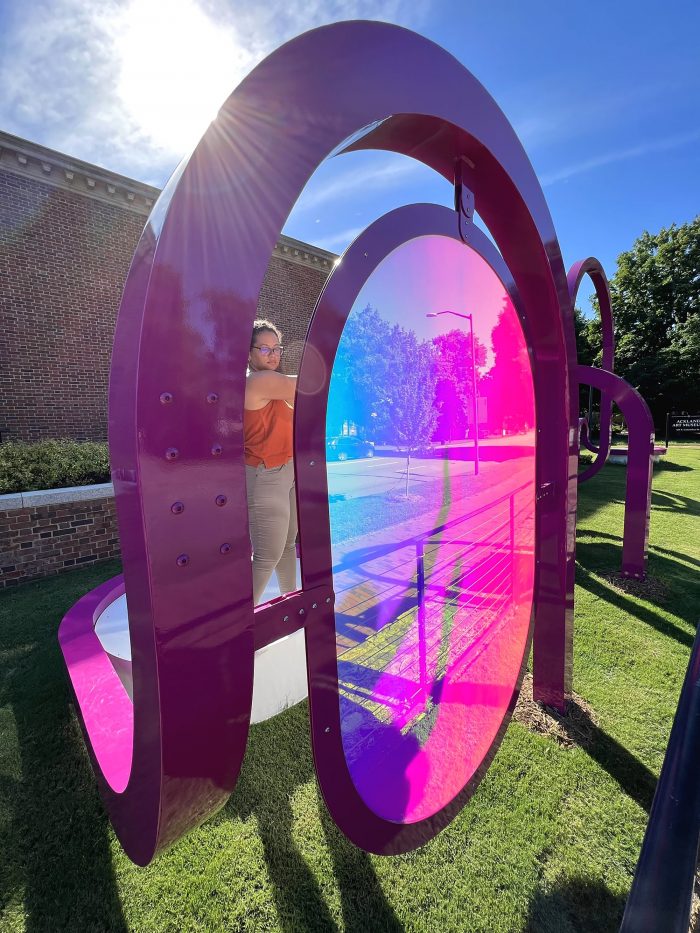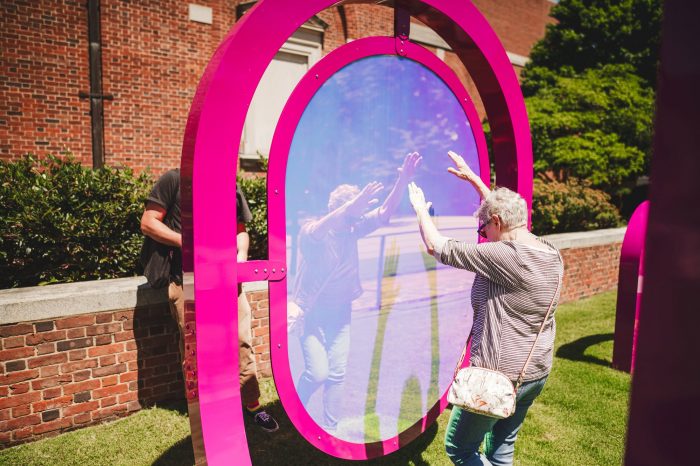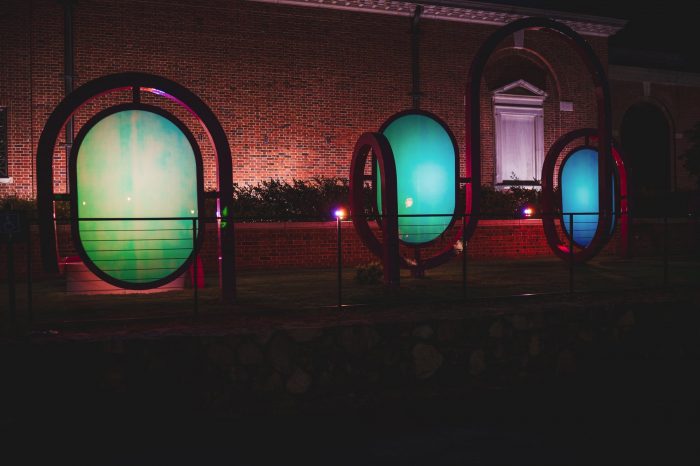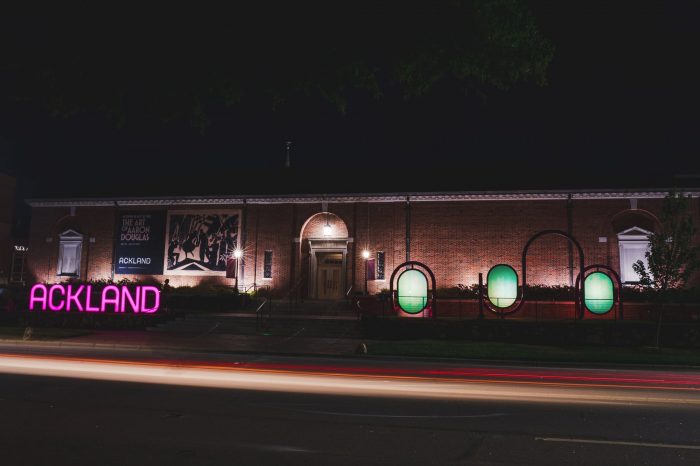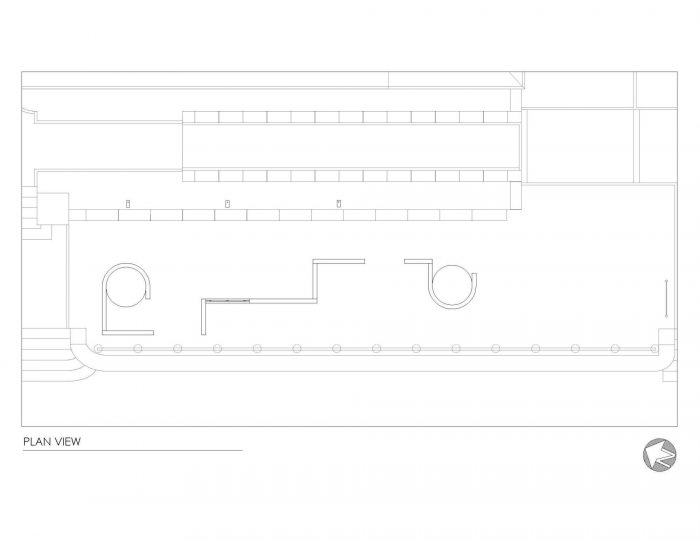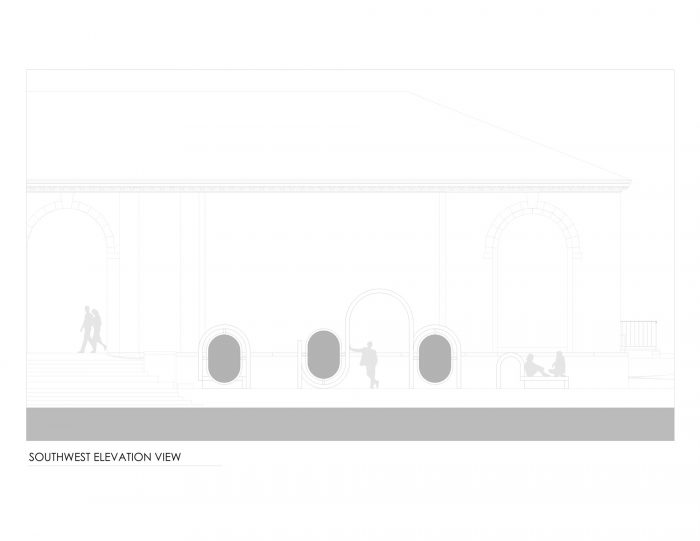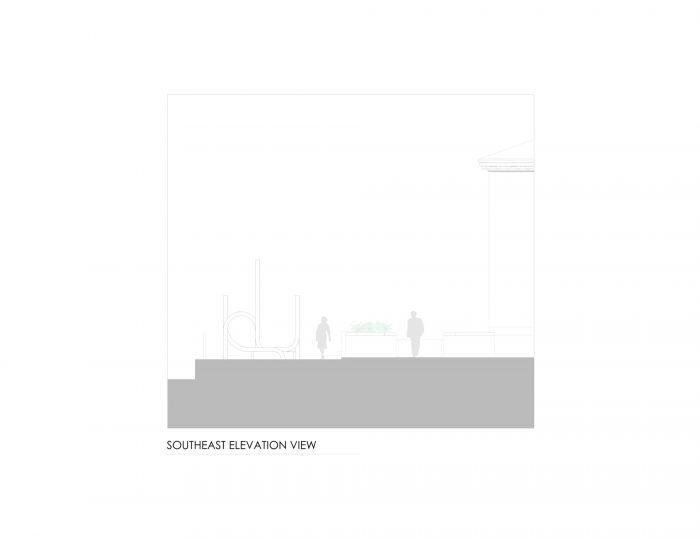pARC由Urban Conga设计,作为教堂山社区和位于北卡罗来纳大学的阿克兰德艺术博物馆的一个开放的可规划空间。Urban Conga工作室通过与社区利益相关者和博物馆代表的一系列参与式设计研讨会,设计了这个空间干预。
pARC was designed by The Urban Conga to serve as an open-ended programmable space for the community of Chapel Hill and the Ackland Art Museum located at the University of North Carolina. The Urban Conga studio designed the spatial intervention through a series of participatory design workshops with community stakeholders and museum representatives. pARC was designed to sit on the open terrace of the museum to serve as a bridge to connect the museum to the street.
作为目前存在于阿克兰德博物馆门内的对话、活动、教学和编程的一个可编程的延伸。该设计显示了如何利用游戏作为艺术机构民主化的工具,将艺术从基座上拿下来,让人们对作品和空间拥有所有权。它邀请人们离开街道,进入博物馆,而这些人可能曾经从未感觉到进入这个空间的舒适。该装置成为一个变革性的公共平台,让所有用户以新的方式与博物馆、大学和彼此接触。
Serving as a programmable extension to the conversations, events, teachings, and programming that currently exists within the doors of the Ackland. The design shows how play can be utilized as a tool in the democratization of art institutions by taking art off the pedestal and allowing people to take ownership of the work and space. It invites people up off the street and into the museum that might have once never felt comfortable entering the space. The installation becomes a transformative communal platform for all users to engage with the museum, university, and each other in new ways.
pARC的设计既模仿了博物馆的乔治亚风格建筑,又与之形成对比。该设计采用了这种对称的殖民主义构图,并将其分成一系列相互连接的弧形。这一系列的弧线似乎从地面上长出来,框出各种社会空间,让用户把自己的身份放在工作、博物馆和周围的空间上。
The design of pARC both mimics and contrasts the Georgian-style architecture of the museum. The design takes this symmetrical colonial composition and breaks it into a series of interconnected arcs. These series of arcs appear to grow up from the ground to frame out various social spaces that allow the users to put their own identity onto the work, the museum, and the surrounding space. pARC becomes a flexible communal space evoking endless ways to play, gather, perform, teach, converse, or even take a nap.
这个空间姿态采用了用户的身份,并利用其可玩的设计来打破社会障碍,在空间内引发公共联系。作品的颜色设计与阿克兰德的品牌重塑相协调,以帮助吸引人们进入博物馆,并作为其新品牌和使命的连接器。该作品采用了通用设计标准,使其成为一个任何人都可以使用的包容性空间。草地下面是一个可持续的网状结构,允许轮椅在空间内通行,同时仍然允许草地通过它生长。
The spatial gesture takes on its user’s identity and utilizes its playable design to break down social barriers and spark communal connection within the space. The color of the work was designed in coordination with the rebranding of the Ackland to help draw people into the museum and serve as a connector to their new brand and mission. The work utilizes universal design standards to make it an inclusive space that anyone can use. Underneath the grass sits a sustainable mesh that allows for wheelchair accessibility within the space while still allowing the grass to grow up through it.
每个拱门都是周围环境的一个框架或反射视图,使用户能够通过不同的视角来观察这个区域。当人们经过这个作品时,他们开始意识到他们的运动改变了面板的颜色,引发了对周围环境的不同的过滤意见。该装置不仅对用户作出反应,而且对环境作出反应,通过其二色性镜片反射和折射周围的环境,同时也向地面和面板本身投射阴影。
Each archway serves as a framed or reflective view of the surrounding context that allows the user to look at the area through a different lens. As one passes the work, they begin to realize their movement changes the colors of the panels sparking different filtered views of the context around them. The installation not only responds to the user but also the environment by reflecting and refracting the surrounding context through its dichroic lenses while also casting shadows onto the ground and the panels themselves.
该作品在白天和晚上都利用光线作为工具,唤起人们对空间的玩味和好奇。在白天,用户可以与太阳互动,将影子投射到面板上,或改变空间内反射的颜色。这种互动激发了人与太阳之间的联系,并显示了他们的行为如何开始在空间内产生反应。在晚上,通过使用红色、绿色和蓝色的灯光,让用户在面板上的影子混合颜色,创造出同样的效果。作品上的影子游戏成为用户可以开始与作品、空间和他人游戏的另一种方式。
The work utilizes light both during the day and at night as a tool to evoke play and wonder into the space. During the day, the user can interact with the sun to cast shadows onto the panels or shift the colors reflected within the space. This interaction sparks a connection between the person and the sun and shows how their actions begin to create a reaction within the space. At night this same effect is created through the use of red, green, and blue lights that allow the user to color mix with their shadows on the panels. The shadow play on the work becomes another way that the user can begin to play with the work, space, and others.
Architects: The Urban Conga
Area : 864 ft²
Year : 2022
Photographs :Tom Waldenberg
Principal Designer : Ryan Swanson, Maeghann Coleman
Associate Designer : Juan Esparza, Brianne De La Torre, Alex Buckley
City : Brooklyn
Country : United States

